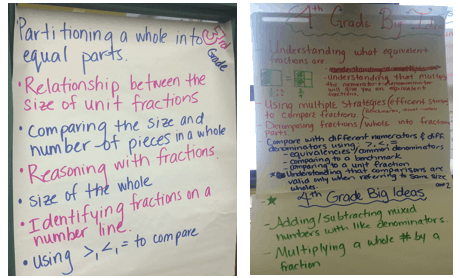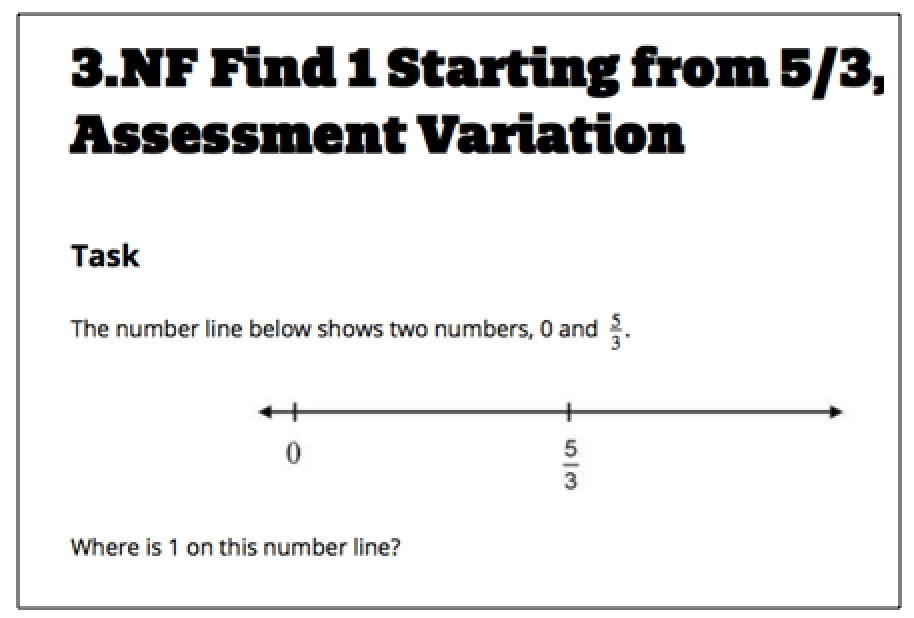Not all instructional materials are created equal — alignment to the Common Core State Standards is a critical issue to educators. Acknowledging that no instructional materials are perfect, and an adopted curriculum will likely be in place for 7-9 years (impacting a generation of students), today’s districts and teachers find themselves in the challenging position of needing to adapt materials to address weaknesses in their existing content. This leads to the question: What do teachers need to know to make decisions about adapting math materials?
I’ve worked with two districts in New York (as part of the Adapting Materials Project) and continue to support districts in Orange County, California with their adaptations. These projects have taught me that adapting materials is a complex process, requiring more than simply searching for tasks or activities to use– a narrow view of adapting which can result in a lack of coherence. I recommend educators consider three questions when trying to determine if they’re ready to begin the process of adapting curricular materials:
- What are the Common Core Shifts and Standards and do I know how to recognize them in instructional materials?
- What within the curriculum is currently aligned?
- What is the math content we need to incorporate into our existing materials?
A strong understanding of the three Shifts and a vision of how those Shifts might be reflected in a curriculum is essential. Educators should ask themselves:
- Does the material focus on the major work of the grade? Is there enough content to support the Major Work in rich and meaningful ways?
- Is there a balance of rigor with equal attention to conceptual understanding, procedural fluency, and application?
- Is there coherence? Are connections made to content within and across grade levels?
Diving deep into the adopted materials through the lens of the Shifts can help teachers identify what within the curriculum is aligned and what is not aligned. Instructional materials reviews focusing on alignment to the Common Core (such as the reports developed by EdReports) and tools such as Student Achievement Partners’ Instructional Materials Evaluation Tool (IMET) can provide information and a framework for this work.
Additionally, building knowledge of the big ideas of math content at each grade level, can be developed through the study of the Common Core State Standards and Progressions documents. For example, one might ask:
- What does “Develop understanding of fractions as numbers” (a grade 3 cluster heading in the Standards), actually mean?
- What is the learning progression within the Standards that builds this understanding for students?
Starting with a close-read of the documents and taking time to process the reading can bring to the surface big ideas, as well as teachers’ understanding of the Standards and misconceptions. Creating charts of the big ideas is helpful in anchoring the work and, when working with multiple grade levels, can create a visual of the coherence within the standards. 
Third and Fourth Grade “Big Ideas” from the Adapting Materials Project.
Digging into the math and understanding the content and intent of the Standards can be further supported through engagement in mathematical tasks and instructional activities, creating a space for teachers to engage in the math as students. This will help teachers develop a stronger sense of the types of activities that get to the heart of different Standards, as well as help them identify when this type of content is present in existing materials and when it needs to be added. Illustrative Mathematics is a source for vetted tasks, illustrative of the Standards, with each task also containing solutions and a commentary that makes the intent of the task explicit, highlights mathematical ideas reflected in the task, and offers ways the task might be integrated into instruction. Take for example this task:
 Math task developed by Illustrative Mathematics and Student Achievement Partners. It can be accessed here.
Math task developed by Illustrative Mathematics and Student Achievement Partners. It can be accessed here.
Engaging in the task can help educators build skills around:
- Plotting fractions on a number line
- Understanding unit fractions and iterating unit fractions to know that 5/3 is 5 iterations of 1/3
- Understanding whole numbers as fractions to know 3/3 is equivalent to 1
The task poses questions such as:
- What do you have to understand about fractions to complete the task?
- What concepts can be addressed by using the task?
- How does the task get at the big idea of (understanding fractions as numbers)?
Thinking about these questions can be helpful in using tasks as a tool for teacher learning. In thinking about adapting instructional materials, considering the knowledge that is needed and how to build that knowledge is imperative. Here on Aligned, the Category, Supplementing and Adapting, can be helpful in continuing to think about adapting materials.


















We are embarking on a curriculum review and want to adopt curriculum resources materials that are consistent PK-8. I wonder if you have a website with more support. This post provides a great start!
Hi Barb,
There are number of other blogs on the Aligned which you might find helpful as you begin your adoption and review journey. Here are a couple: https://achievethecore.org/aligned/top-5-tips-for-building-and-training-your-review-team/ https://achievethecore.org/aligned/conducting-a-state-centered-curriculum-review/ https://achievethecore.org/aligned/now-that-weve-launched-the-work-the-benefits-arent-what-wed-expected/ https://achievethecore.org/aligned/traditional-reviews-vs-the-imet/ https://achievethecore.org/aligned/piloting-new-curriculum-options-with-educators/.
You will also want to check out edreports.org to help narrow down your choices to only those rated highly in terms of CCR standards-alignment.
We also have some online training modules to help you kick off your process: https://achievethecore.org/category/678/identify-aligned-curricula-using-the-instructional-material-evaluation-tool
Hope this helps!